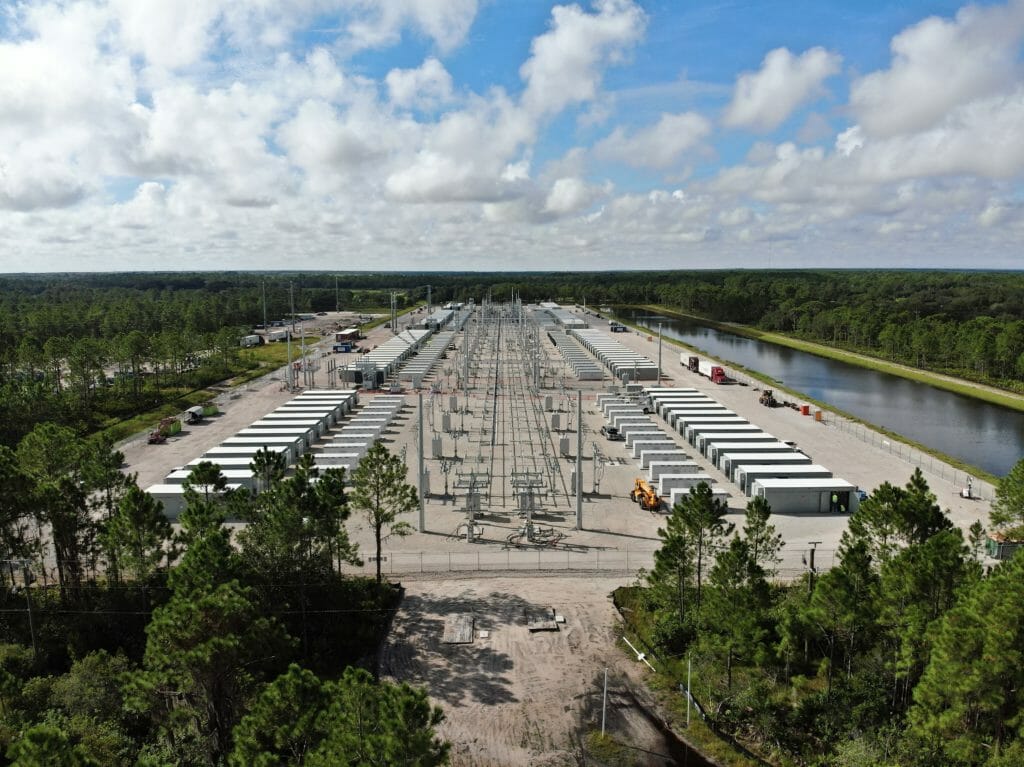From pv magazine Global
Grid-scale energy storage capacity is expected to surpass 30 GW/111 GWh of installed capacity by the end of 2025, according to a new report by the US Energy Information Administration (EIA).
Battery storage capacity in the United States was negligible prior to 2020, at which point storage capacity began to ramp up. As of October 2022, 7.8 GW of utility-scale storage assets began operating, with 1.4 GW of additional capacity to be added by the end of 2022. The EIA expects another 20.8 GW of battery storage capacity to be added from 2023 to 2025.
Growth in energy storage capacity is outpacing the pace of early growth of utility-scale solar. US solar capacity began expanding in 2010 and grew from less than 1.0 GW in 2010 to 13.7 GW in 2015. In comparison, the EIA sees energy storage increasing from 1.5 GW in 2020 to 30 GW in 2025.
Energy storage adds stability to intermittent clean energy sources such as wind and solar. Batteries solve the intermittency problem by storing extra energy produced by wind or solar generators for use later in the day.
While it may come as no surprise, more than 75% of the 20.8 GW of new utility-scale battery capacity that developers plan to install from 2022 to 2025 is located in Texas (7.9 GW) and California (7.6 GW).
More utility-scale solar capacity is located in California than any other state, at 16.8 GW, and developers expect to add another 7.7 GW of solar generating capacity between 2023 and 2025, furthering the ramp up necessary for grid-scale storage solutions.
Another 10.5 GW of utility-scale solar capacity is located in Texas. Developers plan to install another 20.4 GW of solar capacity between 2023 and 2025. Not to mention, Texas is home to 37.2 GW of wind power capacity, more than any other state, and developers expect to add 5.3 GW of new wind turbines over the next three years.
As more battery capacity becomes available, storage projects are becoming increasingly larger in capacity. Before 2020, the largest battery storage project was 40 MW. The 250 MW Gateway Energy Storage System in California, which began operating in 2020, marked the beginning of large-scale energy storage installations.
At present, the 409 MW Manatee Energy Storage in Florida is the largest operating battery storage project in the United States. Developers have scheduled more than 23 grid-scale battery projects, ranging from 250 MW to 650 MW, to be deployed by 2025.
Funding for the massive energy storage roll out will come in part from the Inflation Reduction Act, which BloombergNEF states will drive the development of 30 GW (111 GWh) of energy storage capacity by 2030. The IRA stipulates $369 billion in clean energy investments, as well as 30% tax credit for energy storage systems.
This content is protected by copyright and may not be reused. If you want to cooperate with us and would like to reuse some of our content, please contact: editors@pv-magazine.com.









1 comment
By submitting this form you agree to pv magazine using your data for the purposes of publishing your comment.
Your personal data will only be disclosed or otherwise transmitted to third parties for the purposes of spam filtering or if this is necessary for technical maintenance of the website. Any other transfer to third parties will not take place unless this is justified on the basis of applicable data protection regulations or if pv magazine is legally obliged to do so.
You may revoke this consent at any time with effect for the future, in which case your personal data will be deleted immediately. Otherwise, your data will be deleted if pv magazine has processed your request or the purpose of data storage is fulfilled.
Further information on data privacy can be found in our Data Protection Policy.